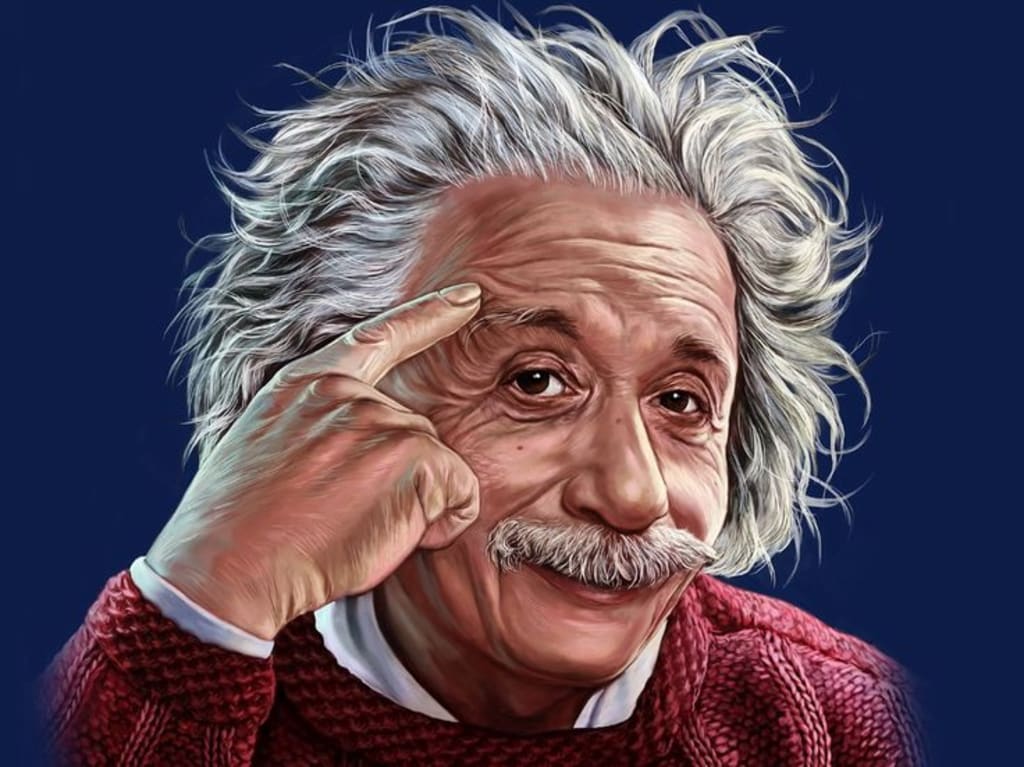The Remarkable Journey of Albert Einstein's Genius
Facts You Didn't Know

Imagine a world where your intellect is so profound that your brain becomes a museum piece, revered and studied for decades after your departure. While such reverence is not bestowed upon all brilliant minds, we delve into the life of one of history's greatest thinkers, Albert Einstein, whose brilliance has transcended generations. Our journey takes us back to the very origins of this luminary, in the town nestled between Stuttgart and Munich, known as Ulm—Einstein's hometown.
The year was 1879, a remarkable year that witnessed not only Einstein's birth but also the debut of Thomas Edison's practical electric light bulb. Interestingly, it marked the birth of three other Nobel Prize laureates. Could there have been some mystical quality in the water that year, bestowing genius upon the world? However, Einstein's early days did not foretell his future greatness. In fact, his parents fretted over his learning abilities. Until the age of five, he struggled to construct coherent sentences. Nevertheless, he exhibited an insatiable fascination with the world and an unrelenting curiosity about how it functioned.
At five years old, a pivotal moment occurred when his father gifted him a compass to play with. This seemingly ordinary compass left an indelible mark on young Einstein. He marveled at how the needle always pointed toward Earth's magnetic north. In his autobiography, Einstein recounted that this encounter kindled his curiosity about invisible forces governing the world—a momentous step in shaping his future career.
By age 15, Einstein had already mastered differential and integral calculus—a realm of mathematics dealing with lengths, areas, volumes, and rates of change. These teenage years showcased glimpses of his genius, yet he grappled with language studies. School did not cater to his preferences, and his strong-willed personality often clashed with it. One teacher, weary of Einstein's tantrums, even predicted that the young boy would amount to nothing. History, of course, would prove him profoundly wrong. At 15, Einstein chose to drop out of school.
His path led him to Switzerland, where he aspired to attend the renowned Swiss Federal Institute of Technology. His initial attempt to gain admission ended in failure, as he performed poorly in subjects such as language, zoology, and botany. Moreover, the entrance exam was in French, posing an additional challenge. Yet, his extraordinary school grades eventually secured his spot at the institute. He embarked on a four-year teaching program in mathematics and physics, a phase that would profoundly shape his future.
These formative years also introduced him to his future wife, Mileva Maric, the sole female student in his physics class. In 1900, Einstein graduated with diplomas in both mathematics and physics. It was during this period that he articulated his belief: "If you can't explain it simply, you don't understand it well enough." To Einstein, the ability to elucidate complex concepts with simplicity formed the cornerstone of teaching.
Post-graduation, Einstein ardently sought teaching positions in mathematics and physics. Rejections abounded, and it took two years of relentless effort before he accepted a job at the Swiss patent office in Bern. Initially unenthusiastic about the role, Einstein spent the next seven years examining patent applications, assessing their inventiveness. However, this job, seemingly unremarkable, proved to be a blessing in disguise. While it didn't demand excessive intellectual rigor, it granted him the freedom to pursue his true passion—physics research—during his evenings.
One fateful evening in 1905, as Einstein completed his shift at the patent office and boarded the tram home, an epiphany occurred. Gazing out at the clock tower in Bern's city center, he pondered what would happen if the tram moved at the speed of light. This contemplation led to a groundbreaking revelation: the hands of the clock would appear frozen to a traveler moving at the speed of light, while they continued their normal movement for an observer on the tram. This realization sowed the seeds of Einstein's special theory of relativity, which he would famously encapsulate in the equation E=mc².
1905 marked the "Year of Miracles" for Einstein, during which he published four papers that reshaped humanity's understanding of the universe. Among these papers was his special theory of relativity, which initiated a paradigm shift in physics. This theory, encapsulated in the iconic equation, E=mc², posits that energy is equivalent to mass times the speed of light squared—a concept that has since become ingrained in the annals of scientific knowledge.
In 1921, Einstein received the Nobel Prize for his explanation of the photoelectric effect, not for his theory of relativity, highlighting the initial skepticism surrounding his groundbreaking work. Undeterred, Einstein continued to refine his theories, grappling with the inclusion of gravity, which had eluded his initial formulations.
Newton's law of gravity posited a constant force acting on all objects in the universe. However, it took Einstein another decade to complete his general theory of relativity, which reconciled Newton's gravity with his own theories. According to Einstein, massive objects, like the sun, create a curvature in space, causing smaller objects, like Earth, to move along curved paths, creating the illusion of gravitational attraction.
In the 1930s, Einstein relocated to the United States, accepting a teaching position at Princeton University. He spent the rest of his life at the Institute for Advanced Study in New Jersey, remarking that he never felt truly at home in any one country, yet harboring a deep fondness for the U.S., where he chose to remain.
As we conclude this exploration of Albert Einstein's extraordinary life, we find ourselves in awe of a man whose relentless curiosity, profound insights, and unyielding pursuit of knowledge reshaped the very fabric of our understanding of the universe. Einstein's journey from a curious child to a global icon serves as an enduring testament to the power of human curiosity and the indomitable spirit of those who dare to question the world around them.
About the Creator
Jeremiah “Jeremy” SEAL
"Passionate storyteller 📖 | Finding my voice one word at a time 🎤 | Exploring life's adventures and sharing them with you 🌟 | #VocalMedia"






Comments
There are no comments for this story
Be the first to respond and start the conversation.